SIGGRAPH Asia 2013: Art Gallery
Chair(s):
- Mark Chavez
-
- Nanyang Technological University
Location:
Hong Kong, Hong Kong
Dates:
November 19th - November 22nd, 2013
Art Show Overview:
Naturally occurring phenomena occur in the world we live in. Science, technology and art converge to enrich artistic expressions of nature and provide novel elements for conveying the sophisticated philosophy of existence, growth, and evolution in our natural world.
The SIGGRAPH Asia 2013 Art Gallery invites artists from around the world to showcase their innovative and leading-edge digital contributions on the aesthetics and meaning of nature through a myriad of mediums and techniques.
Art Show Jury:
- Cynthia Beth Rubin
-
- Rhode Island School of Design
- C B Rubin Studio
- Nina Yankowitz
Exhibition Artworks:
-
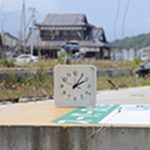
Ambient Camera: Who released the shutter...
[Kotaro Abe] [Yasuaki Kakehi]
Categories: [Installation] -

Beyond the Gravity
[Jae Joon Cho] [Won Hyung Lee]
Categories: [Installation] -
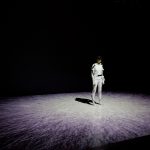
Duali
[Suguru Goto]
Categories: [Performance] -
![DynamicProjection[OCTA]](https://digitalartarchive.siggraph.org/wp-content/uploads/2018/10/2013_Kudo_Tsukamoto_Dynamic_Project-150x150.jpg)
DynamicProjection[OCTA]
[Tatsuro Kudo] [Satoshi Tsukamoto]
Categories: [Performance] -
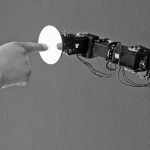
Egg
[Byungioo Lee]
Categories: [Installation] -

EMC (Emergent Mind of City) 2 & Qualia L...
[Jin Hyun Ahn] [Hong-Gee Kim]
Categories: [Installation] -
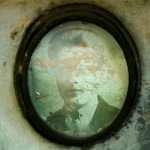
Faceless Patrons
[Andreas Zingerle]
Categories: [Augmented Reality/Virtual Reality] -
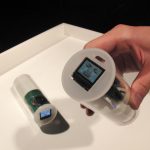
Ijiros
[Yujiro Kabutoya] [Kazushi Mukaiyama]
Categories: [Electronic/Robotic Object] -

Lapillus Bug
[Takayuki Hoshi] [Yasuaki Kakehi]
Categories: [Animation & Video] -

Mise-en-Scène: Elysian Fields
[Ina Conradi Chavez]
Categories: [Animation & Video] -

Opticks
[Daniela De Paulis]
Categories: [Performance] -

Paint Wall
[Tommaso Colombo] [Moonjung Go]
Categories: [2D & Wall-Hung] -
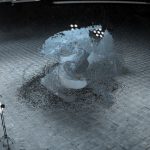
Perception of Consequence
[Kamil Nawratil]
Categories: [Installation] -

Talking with the Rusted Cloud
[Ioannis Michaloudis]
Categories: [Installation] -
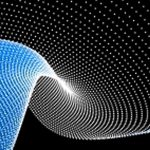
When Equations Dance- Tango with Lin Hsi...
[Hsin Hsin Lin]
Categories: [Interactive & Monitor-Based] -

Wind over Water: Making Visible the Invi...
[Russell Bauer] [Robbert de Goede]
Categories: [Interactive & Monitor-Based] -
![[blow:]](https://digitalartarchive.siggraph.org/wp-content/uploads/2018/10/2013_blow__Choi-150x150.jpg)
[blow:]
[In-kyung Choi]
Categories: [Installation]
Exhibition Writings and Presentations:
-
Title:
5 Story Building
Author(s):
Category: Paper
Abstract Summary:
A mischievous Monster, a naive Sidekick, ten shallow Girls, a retired Villain, an apathetic Robot, and a Megalomaniac from outer space live under one roof in the “5 Story Building”. Five simultaneous stories tell the lives of the singular occupants of this confining building. These neighbors carry on with their own ambitions and inherited craziness without realizing that their stories are intertwined in this episodic interactive fiction.
Jean Paul Sartre and “Sleep No More” inspire this experience for digital tablets that explores the nuances and opportunities enabled by the introduction of interactivity in storytelling.
“5 Story Building” is intentionally crafted to show off things that traditional media cannot. This project explores the possibility of multiple simultaneous stories that are part of a bigger plot. These stories develop regardless if they are seen or not: the users’ decisions are not only about what they sees but also, and maybe most importantly, what they decide not to see.
Multiple readings are necessary and voyeurism is encouraged.
[View PDF]Title: A-me: Augmented Memories
Author(s):
Category: Paper
Abstract Summary:
A-me is a fictitious memory-evoking apparatus at the intersection of science, art and technology. The system enables users to experience other people’s memories as well as store their own by interacting with a volumetric representation (MR) of a human brain. The user retrieves or stores memories (audio traces) by pointing and clicking at precise voxels locations. Triggered by their exploratory action, a story is slowly revealed and recomposed in the form of whispering voices revealing intimate stories. A-me it’s a public receptacle for private memories, thus exploring the possibility of a collective physical brain.
The installation introduces an original optical see-through AR setup for neuronavigation capable of overlaying a volume rendered MR scan onto a physical dummy head. Implementing such a system also forced us to address technical questions on quality assessment of AR systems for brain visualization.
Title: Cerebral Interaction and Painting
Author(s):
Category: Paper
Abstract Summary:
The research focuses on combination of novel technology and traditional art. In this paper, a novel interactive art installation (IAI) using user’s thought to interact with a digital Chinese ink painting is introduced. Meanwhile, the final purpose of this
research is to establish a link between novel technology and traditional arts and further to bring out traditional art philosophy by taking the advantages of novel technology. Finally, this research aims to help people understand not only the visual expression of an art, but also its philosophy and spirit through different kinds of interaction. Based on this, the theory research focuses on four parts: traditional art philosophy, artistic and cognitive psychology, traditional art, novel technology. Meanwhile, for practice, a Chinese style IAI experiment including brain waves control technology is introduced to help people better understand the purpose of this research.
Title: Generating Abstract Paintings in Kandinsky Style
Author(s):
Category: Paper
Abstract Summary:
This paper presents a recent project on automatic generation of Kandinsky style of abstract paintings using the programming language Processing. It first offers an analysis of Kandinsky’s paintings based on his art theories and the author’s own understanding and observation. The generation process is described in details and sample generated images styled on four of Kandinsky’s paintings are also demonstrated and discussed. Our approach is highly scalable, limited only by the memory space set in Processing. Using random generation, every styled image generated can be unique. A selection of the images generated in the required resolution is also submitted and 70 images are made into a video companion.
[View PDF]Title: Participating Interface
Author(s):
Category: Paper
Abstract Summary:
This paper presents an artwork that is concerned with the interactions among people rather than the interaction between an audience and the artwork. We visualize the physical motion variations from the interactions among different participants using Kinect-based depth estimation and video tracking algorithms. The proposed work can visualize the affective experiences based on the physical distance between participants. We also provide experiences in which a participant becomes a part of the artwork in the form of both shape and interface. The body of a participant plays an important role in communicating and interacting with other participant and the artwork itself.
[View PDF]Title: SwarmVision: Autonomous Aesthetic Multi-Camera Interaction
Author(s):
Category: Paper
Abstract Summary:
A platform of exploratory networked robotic cameras was created, informing new directions in computer vision engineering and utilizing an aesthetic approach to experimentation. Initiated by research in autonomous swarm robotic camera behavior, SwarmVision is an installation consisting of multiple Pan-TiltZoom cameras on rails positioned above spectators in an exhibition space, where each camera behaves autonomously based on its own rules of computer vision and control. Each of the cameras is programmed to detect visual information of interest based on a different algorithm, and each negotiates with the other two, influencing what subject matter to study in a collective way. The emergent behaviors of the system suggest potential new approaches in scene reconstruction, video-based behavior analysis and other areas of vision and imaging research.
[View PDF]Title: The Next Generation Poetic Experience
Author(s):
Category: Paper
Abstract Summary:
This paper presents the motivation, background and implementation of The Muses of Poetry, an interactive installation that combines dynamically generated character animation, semantic analysis, natural voice interaction and affect in poetry. Inspired by the subjectivity and ethereal quality of this literary art, we wanted to enhance the act of reciting poetry by providing a set of characters the possibility to “understand” and manifest the emotional content of the poems through facial expressions and affective speech. We believe that this original installation will bring poetry closer to a wider audience, while creating a playful, interactive and surprising experience for the user.
Title: Topics on Aesthetic Data Visualization: Viewpoints, Interpretation, and Alternative Senses
Author(s):
Category: Paper
Abstract Summary:
Aesthetic data visualization, which looks at complex data sets from an ingenious perspective, is difficult to empirically organize due to its insufficient records. Fortunately, insightful artists and curators have recently provided some notable interdisciplinary exhibitions and publications. This author was a recent participant at such an event; however, it is not easy to summarize the various projects into a single vision because each artist’s value, method, philosophy, and aesthetic preference are unique. This paper categorizes data visualization based on various topics. Aesthetic data visualization is similar to conventional data visualization in that it organizes ambiguous data into a database. Artists then tend to integrate the information into their art. In this regard, it might be possible to identify tendencies and examine data as contemporary iconology, as well as discover hidden possibilities of recent aesthetic data visualizations.
[View PDF]Title: Topics on Bible Visualization: Content, Structure, Citation
Author(s):
Category: Paper
Abstract Summary:
Text visualization begins with understanding text itself which is material of visual expression. To visualize any text first and the expressive approaches theoretical foundation about the about the approaches for text visualization by diverse examples of test visualization which are derived through the various characteristics of the text. To do this, we chose the “Bible” test which is well known globally and digital data of it can be accessed easily and thus diverse test visualizations examples exist and analyzed the example of the bible text visualization. We derived the unique characteristics of the text-content, structure, and quotation as criteria for analyzing and supported validity of analysis by adopting at least 2-3 examples for each criterion. In the result, we can comprehend that the goals and expressive approaches are decided depending on the unique characteristics of the Bible text. We expect to build theoretical method for choosing the materials and approaches by analyzing more diverse examples with various point of views on the basis of this research.
[View PDF]



